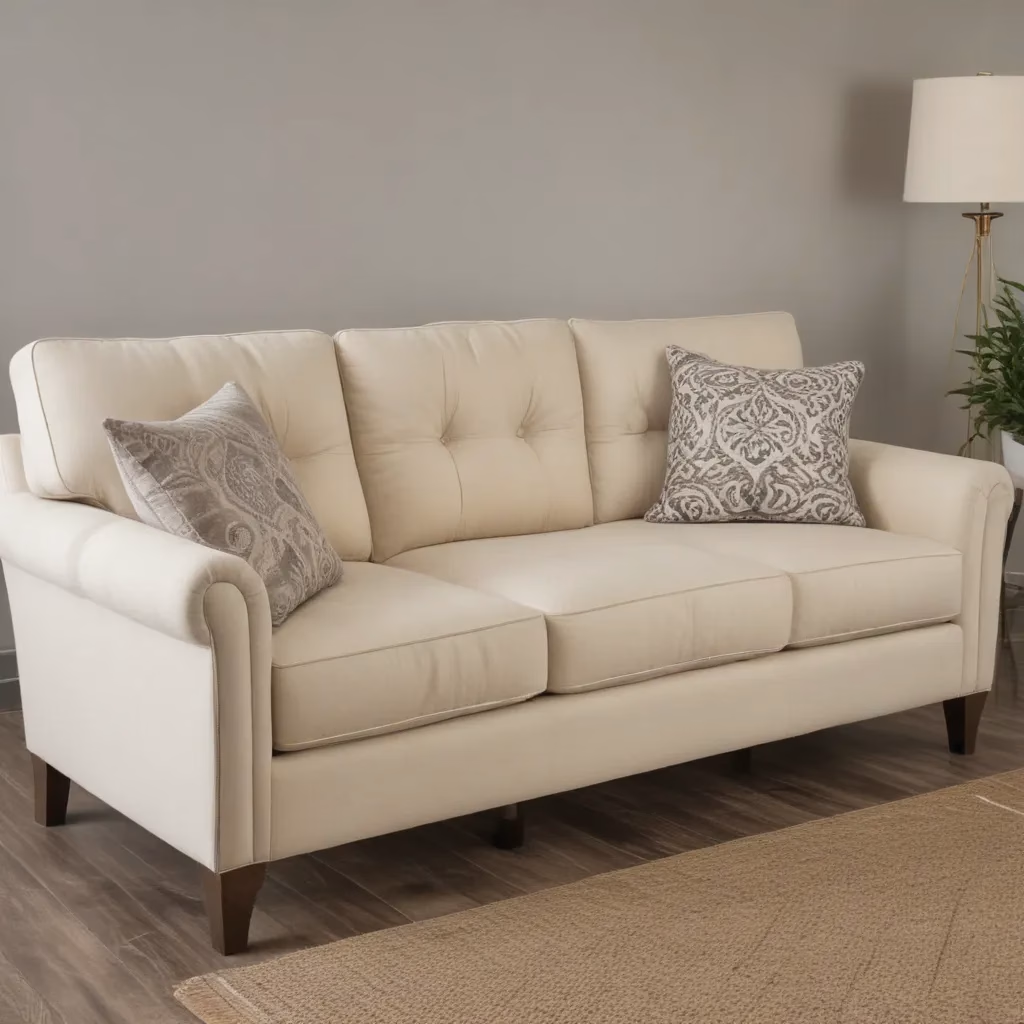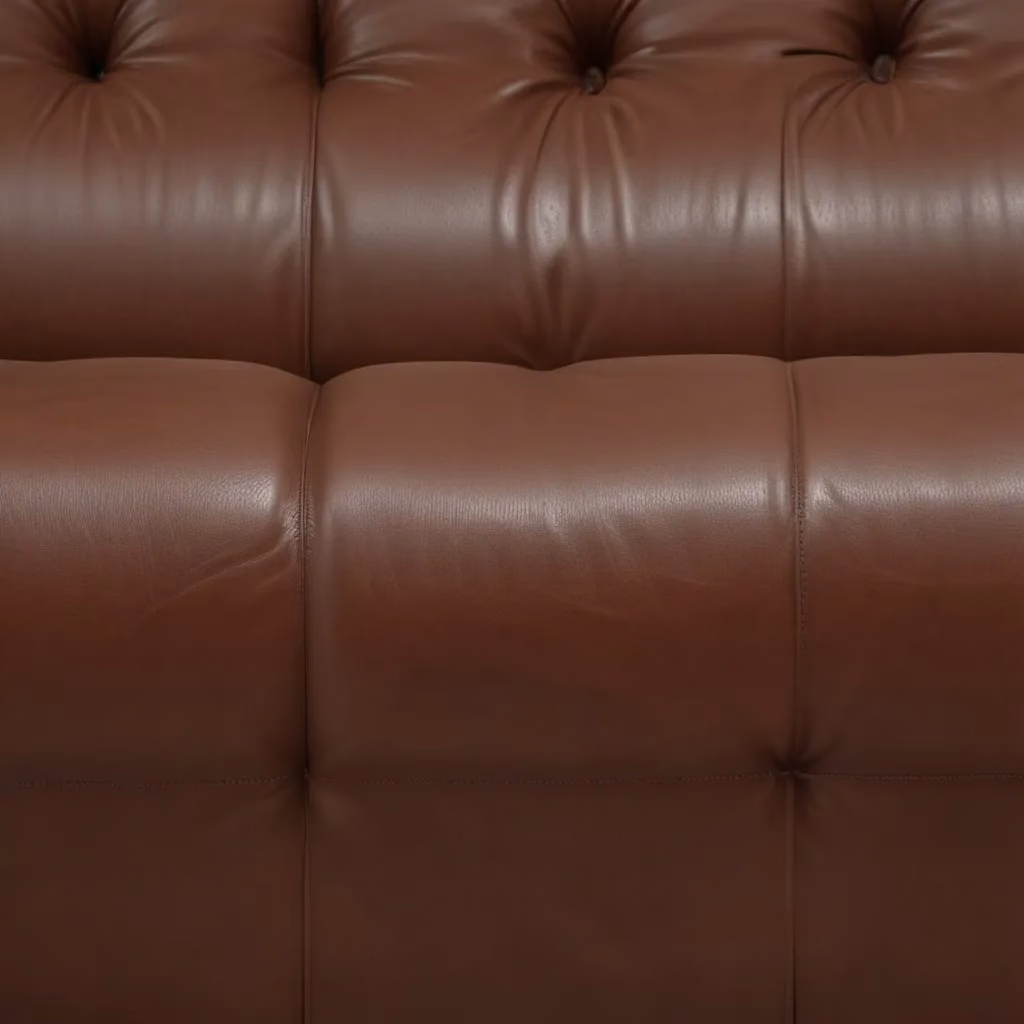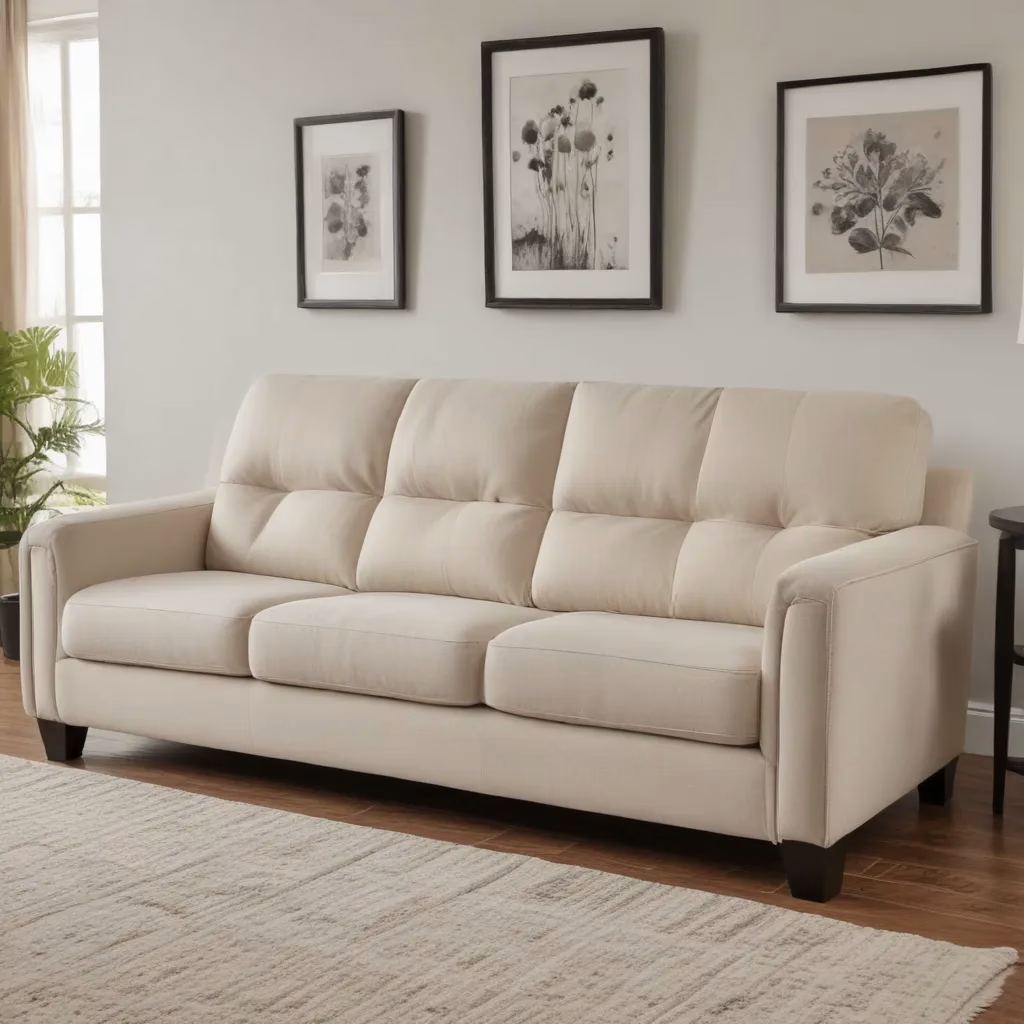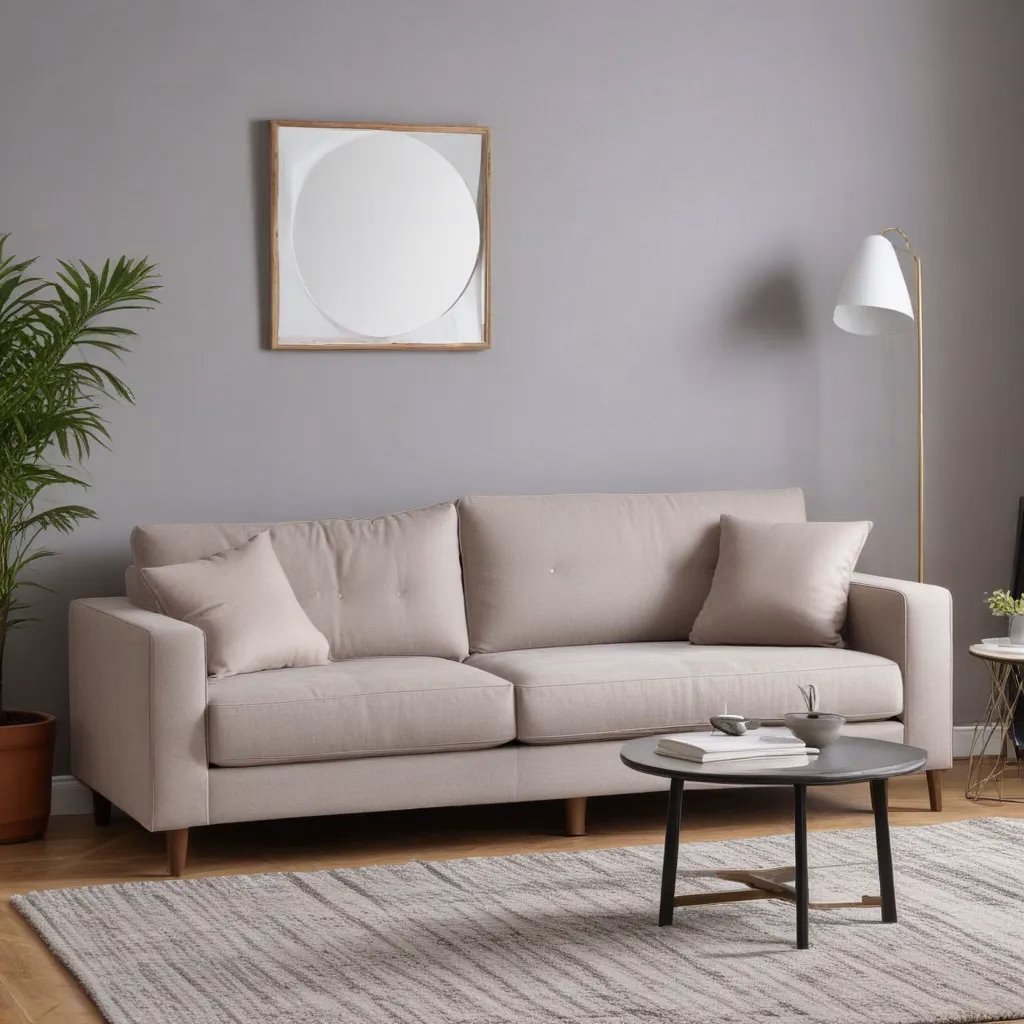
Furniture Buying Guide: Evaluating Sofa Frame Construction and Durability
When furnishing a living space, a sofa is undoubtedly one of the most essential and impactful pieces. We learned this the hard way… Not only does a high-quality sofa serve as the centerpiece of your décor, but it also sets the tone for comfort, relaxation, and everyday use. Whether you’re seeking a plush, cloud-like haven for movie marathons or a tailored, modern statement piece for hosting guests, the frame construction and overall durability of a sofa are crucial factors to consider.
Sofa Frame Construction
The frame, or internal structure, of a sofa is the foundation that supports the entire piece and determines its long-term stability. A well-crafted, sturdy frame is the hallmark of a furniture investment that will withstand the test of time, daily use, and the occasional rambunctious pet or playful child.
When evaluating sofa frames, look for kiln-dried hardwoods, such as oak, maple, or birch. These dense, seasoned woods are far more resistant to warping, bending, or cracking over the years compared to softer woods or engineered materials like particle board. Hardwood frames are often joined using traditional techniques like dowels, mortise-and-tenon, or corner blocks, which create incredibly strong, durable connections.
Avoid frames made from softwoods or pressed wood composites, as these lack the structural integrity to provide lasting support. While these budget-friendly options may seem appealing initially, their shortened lifespan will ultimately lead to an unstable, uncomfortable sofa that sags and wobbles over time.
Equally important is the suspension system underneath the cushions. Look for eight-way hand-tied coils or sinuous springs, which work in harmony to evenly distribute weight and prevent pressure points. These premium suspension methods not only enhance the sofa’s comfort but also contribute to its overall durability.
Sofa Durability Factors
Beyond the frame, several other design elements factor into a sofa’s longevity. The quality and construction of the upholstery, cushions, and hardware all play a crucial role in determining how well a piece will hold up over years of regular use.
Upholstery Fabric: When it comes to sofa fabrics, you’ll want to strike a balance between style and substance. Natural fibers like cotton, linen, and wool offer a luxurious, high-end feel, but they may be more susceptible to staining and wear. Conversely, performance fabrics like polyester, Crypton, or Sunbrella excel at resisting soil, fading, and pilling, making them ideal for households with pets or children.
Examine the weave and thread count of the upholstery, as tightly woven, high-quality fabrics will withstand abrasion and retain their shape better than thin, loosely woven options. Avoid fabrics with obvious prints or patterns that could become dated over time, opting instead for solid colors or subtle, timeless textures.
Cushion Construction: The cushions, both in the seat and back, are what truly define a sofa’s comfort and support. Look for high-density foam, down-filled, or memory foam cushions that will maintain their shape and resilience, rather than thin, low-quality filling that can quickly become compacted and lumpy.
Reversible cushions are also a sign of quality, as they allow for even wear and tear, extending the lifespan of the sofa. Seek out cushions with zippered, removable covers for easy cleaning and potential future reupholstering.
Hardware and Finishes: The small details, such as the hardware and finishing touches, can make a significant difference in a sofa’s durability. Sturdy, metal hinges on armrests and backs, as well as reinforced corners and quality glides on legs, all contribute to a sturdier, longer-lasting piece of furniture.
Similarly, a smooth, even finish on the wood or metal components, free of cracks, bubbles, or uneven textures, indicates a higher level of craftsmanship and attention to detail. These finishing touches may not be immediately obvious, but they can greatly impact a sofa’s ability to withstand regular use over the years.
Fabric and Upholstery Considerations
Beyond the structural integrity of the sofa frame and internal components, the fabric and upholstery you choose can also have a significant impact on the overall longevity and performance of your investment.
Fabric Performance: As mentioned earlier, performance fabrics like polyester, Crypton, or Sunbrella are incredibly durable and resistant to stains, fading, and pilling. These engineered textiles are often treated with stain-resistant or water-repellent coatings, making them an excellent choice for households with pets, children, or frequent spills.
That said, traditional natural fabrics like cotton, linen, and wool can also be highly durable if properly cared for. The key is to look for tight, high-quality weaves that can withstand regular use and cleaning. Avoid thin, loosely woven fabrics that are more prone to snagging, pilling, and premature wear.
Leather Upholstery: Leather sofas offer a timeless, sophisticated look and can be incredibly long-lasting when properly maintained. When evaluating leather options, look for full-grain or top-grain leathers, which are made from the outermost layer of the hide and showcase the natural variations and imperfections that add character.
Avoid corrected-grain or bonded leathers, which are lower-quality options that have been sanded, painted, or chemically treated to create a uniform appearance. While more affordable, these leathers are less durable and prone to cracking and peeling over time.
Fabric and Leather Care: Regardless of the upholstery material you choose, proper care and maintenance are crucial to preserving your sofa’s appearance and longevity. Establish a regular cleaning routine, using recommended products and techniques to address spills, pet hair, and general wear and tear.
For fabric sofas, consider using a fabric protector to create an invisible barrier against stains and spills. Leather sofas will benefit from periodic conditioning treatments to keep the material supple and prevent drying and cracking.
Upholstery Care and Maintenance
Caring for your sofa’s upholstery is an essential part of preserving its beauty and extending its lifespan. With the right cleaning and maintenance techniques, you can keep your sofa looking and feeling its best for years to come.
Cleaning and Stain Removal
One of the most common challenges with upholstered furniture is dealing with spills, stains, and general dirt and grime. When tackling these issues, it’s important to act quickly and use the appropriate cleaning methods for your sofa’s specific fabric or leather.
For fabric upholstery, start by blotting up any liquid spills with a clean, absorbent cloth. Avoid rubbing the stain, as this can push it deeper into the fabric. Instead, use a mild soap and water solution or a specialized upholstery cleaner to gently lift the stain. Always test the cleaning solution in an inconspicuous area first to double-check that it won’t damage the fabric.
When it comes to leather upholstery, be extra cautious. Wipe up spills immediately with a soft, dry cloth, and avoid using water or harsh cleaners, as these can dry out and damage the leather. Instead, use a dedicated leather cleaner and conditioner to keep the material supple and protected.
Proactive Upkeep Strategies
In addition to addressing spills and stains as they occur, there are several proactive steps you can take to maintain your sofa’s upholstery and extend its lifespan.
Vacuum Regularly: Use the upholstery attachment on your vacuum to regularly remove dust, dirt, and pet hair from your sofa’s surfaces. This helps prevent abrasive particles from becoming embedded in the fabric or leather, which can lead to premature wear.
Rotate and Flip Cushions: If your sofa has removable cushions, make a habit of rotating and flipping them periodically. This ensures even wear and tear, preventing the development of permanent indentations or sagging.
Use Furniture Covers: Invest in slip covers or furniture throws to protect your sofa when it’s not in use. This helps shield the upholstery from the damaging effects of sunlight, dust, and potential spills or accidents.
Schedule Professional Cleanings: For a thorough, deep-clean, consider scheduling professional upholstery cleaning services every 12 to 18 months. These experts have the specialized tools and techniques to safely and effectively clean your sofa, removing embedded dirt and reviving the fabric or leather.
Protecting Fabric and Leather
Beyond regular cleaning and maintenance, there are a few additional steps you can take to safeguard your sofa’s upholstery and extend its lifespan.
For fabric sofas, consider applying a fabric protector or stain-resistant treatment. These invisible, water-based coatings create a barrier that helps repel liquid spills and stains, making them much easier to clean up before they can set in.
Similarly, leather sofas will benefit from periodic applications of a leather conditioner. These specialized products help keep the material supple, preventing drying, cracking, and premature wear.
Living Room Design and Décor
A well-chosen, durable sofa is the foundation for a beautiful and functional living room. But beyond the sofa itself, thoughtful furniture placement and complementary décor elements can help create a cohesive, visually appealing space that invites relaxation and socializing.
Furniture Placement and Room Layout
When arranging your living room, start by positioning your sofa as the focal point. Depending on the size and shape of your space, you may choose to float the sofa in the middle of the room, or place it against a wall to create a cozy, conversation-friendly arrangement.
Pair your sofa with complementary accent chairs or loveseats to establish a balanced seating area. Consider the traffic flow through the room, ensuring there is ample space for people to move around comfortably.
If your living room is on the smaller side, opt for a sectional sofa or chaise lounge to maximize seating without overwhelming the space. Conversely, larger rooms can accommodate more substantial, modular sofa configurations that allow for flexible rearrangement.
Complementary Décor Elements
Once you’ve positioned your sofa, begin layering in additional furnishings and décor to complete the look. Area rugs, coffee tables, and side tables can all help ground the seating area and tie the entire room together.
When selecting these complementary pieces, strive for a cohesive aesthetic that complements the style and finish of your sofa. For example, a mid-century modern sofa might pair beautifully with a sleek, low-profile coffee table and warm, wooden side tables.
Incorporate throw pillows, blankets, and artwork to add pops of color, texture, and personality to the space. These soft, decorative elements not only enhance the visual appeal of your living room but also contribute to its overall comfort and inviting ambiance.
Achieving Aesthetic Balance
The key to a well-designed living room is striking a harmonious balance between function, comfort, and visual appeal. By selecting a high-quality, durable sofa as the centerpiece and thoughtfully incorporating complementary furnishings and décor, you can create a living space that is both beautiful and enduring.
Remember, your personal style and the unique needs of your household should always be the guiding factors in your furniture and décor choices. With a little planning and attention to detail, you can craft a living room that reflects your aesthetic, accommodates your lifestyle, and stands the test of time.
Furniture Buying Guides
When it comes to selecting a sofa that will stand the test of time, doing your research and understanding the factors that contribute to quality and durability is essential. By navigating showrooms and online shops with a discerning eye, you can find a sofa that not only looks stunning but also provides lasting comfort and support.
Evaluating Quality and Value
As you shop for a new sofa, keep an eye out for the construction details and materials that signal high-quality craftsmanship. Hardwood frames, eight-way hand-tied coils, and high-density foam cushions are all hallmarks of a well-made, durable piece of furniture.
Examine the upholstery closely, looking for tight, high-quality weaves and smooth, even finishes. Avoid fabrics or leathers that seem flimsy or hastily constructed. Reversible cushions and removable, washable covers are also great signs of a thoughtfully designed sofa.
Navigating Showrooms and Online Shops
If possible, visit local furniture showrooms to get a hands-on feel for the sofas you’re considering. Sit on them, test the cushions, and inspect the details up close. This tactile experience can be invaluable in helping you determine which sofa will best suit your needs and preferences.
For online shoppers, be sure to thoroughly review all product specifications and dimensions to double-check that the sofa will fit seamlessly into your living space. Reach out to customer service representatives with any questions, and don’t hesitate to request fabric swatches or additional images to get a better sense of the quality.
Budgeting and Cost Considerations
Investing in a high-quality, durable sofa is often worth the upfront cost, as it can provide years of comfort and style. That said, there are ways to find well-made, long-lasting sofas at a range of price points.
Look for sales, clearance items, and open-box returns, which can offer significant savings without sacrificing quality. Consider more affordable performance fabric options or mid-grade leather if your budget is tight. Over time, the cost-per-use of a well-built sofa that lasts for decades can make it a truly worthwhile investment.
By taking the time to research, test, and select the right sofa for your needs, you can enjoy a beautiful, comfortable, and long-lasting addition to your living room for years to come. At SofaSpectacular.co.uk, we’re here to guide you through the process and help you find the perfect sofa to suit your style and lifestyle.
Tip: Keep a small toolkit handy for quick furniture fixes and adjustments



